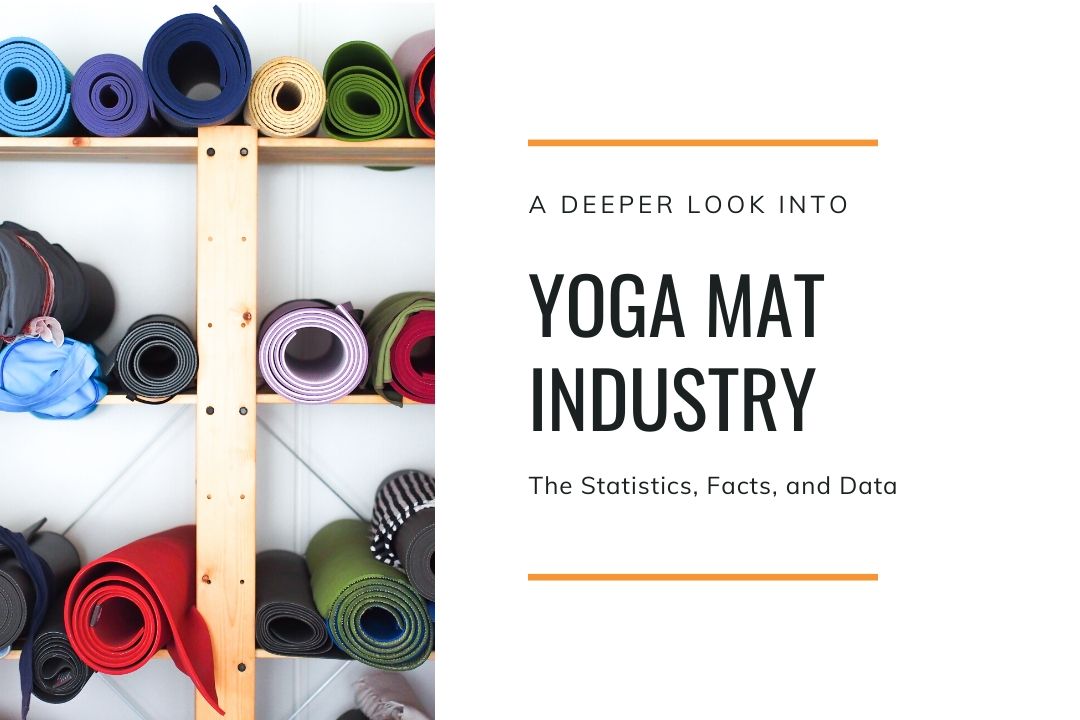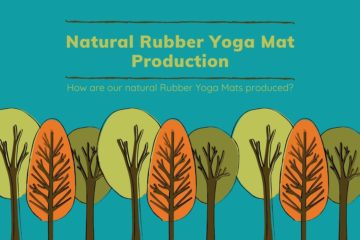This article is a brief summary on yoga mat industry, its materials, distribution channels and market shares of some prominent players in the industry, based on the research of Yoga Mat Market 2020 Global Industry, conducted by GrandViewResearch.
Summary of Contents
1. Yoga Mat Industry Insights
The global yoga mat market size was valued at USD 11.67 billion in 2018 and is projected to expand at a CAGR of 5.8% from 2019 to 2025. CAGR stands for “compound annual growth rate” which is a business and investing specific term for the geometric progression ratio that provides a constant rate of return over the time period.

Growing popularity of yoga, especially in developed countries including U.S., Canada, and U.K., is expected to be the key factor driving the market. Increasing cases of lifestyle diseases and rising awareness about the health benefits of yoga are also boosting the product demand.
According to studies, around 36.7 million of American practiced yoga in 2016. Moreover, rising number of yoga studios in developed regions is expected to drive the product demand further. Many governments have initiated supportive programs to promote yoga and Ayurveda. For instance, in 2017, the government of India opened more than 100 Yoga Parks in the country.
In 2018, the government allocated more than INR 1000 crore for the development of AYUSH system of medicine. In addition, inclusion of this ancient technique in education system and rapidly growing wellness tourism sector are expected to have a positive impact on the market development. As per studies, in 2008, around 5% of population practiced yogic techniques on daily basis or occasionally, which doubled in a decade to nearly 11% in 2018.
Germany is one of the potential markets in Europe. The Polyvinyl Chloride (PVC) material segment accounted for the maximum market share in 2018 due to high efficiency and low cost of these materials. However, manufacturers are focusing on developing products from eco-friendly and biodegradable materials, such as natural rubber and Thermoplastic Elastomer (TPE), owing to stringent government regulations on use of plastic. Thus, rubber material segment is anticipated to expand at the fastest CAGR over the forecast period.
2. Yoga Mat Material Insights
Polyvinyl Chloride (PVC) segment held the largest market share of 40.3% in 2018 and will continue to expand further as these materials are cheaper than other materials. However, the segment will lose its share owing to growing environmental concerns as PVC is non-recyclable and contains hazardous chemicals. Rubber material segment is anticipated to expand at the fastest CAGR over the forecast period. Polyurethane (PU) rubber mats are gaining popularity owing to their eco-friendly properties.
There are much more materials other than PVC and rubber. Explore 9 yoga mat materials here.

3. Yoga Mat Distribution Channel Insights
Specialty store was the leading distribution channel segment in 2018. Increasing number of specialty stores, especially in China, South Korea, and Australia, is the key factor driving the segment. Departmental store is anticipated to expand at a CAGR of 4.8% from 2019 to 2025. Increasing number of departmental stores in tier II and tier III cities is expected to promote product sales through this channel.
Online segment anticipated to expand at a CAGR of 6.4% from 2019 to 2025. This channel is relatively small compared to offline channel, but is growing at significant rate owing to increasing penetration of internet and smartphone. The key reason for the growth of online shopping is it offers assistance of 24*7 hour availability, have great variety of option, and can compare price. In addition, most vendors have their own online site from where consumer can order product as per their requirements. Moreover, increasing number of dedicated online retailer such as YogaOutlet.com, Walmart and Amazon are expected to assist in growth of the yoga mat market.
4. Regional Insights
North America emerged as the largest regional market in 2018 owing to growing awareness about the health benefits of yoga and number of yoga studios in the region. Asia Pacific is projected to be the fastest-growing regional market, expanding at a CAGR of 7.3% over the forecast period. Supportive government initiatives coupled with increasing participation is the key factor fueling the product demand in the region. Moreover, increasing number of yoga studios in Beijing, Shanghai, and other Chinese cities is expected to boost the product demand.
5. Yoga Mat Market Share Insights
The global market is highly competitive in nature. Some of the prominent companies operating in the market are Lululemon; Manduka; Jade Yoga; prAna; Hugger Mugger; Khataland; Liforme Ltd.; Dragonfly; Tomuno; and Alo Yoga, Inc.




[…] did a lot of research about yoga mat industry. We actually started in the yoga mat distribution before moving on to develop our own brand Beinks, […]
[…] A deeper look into Yoga Mat Industry […]